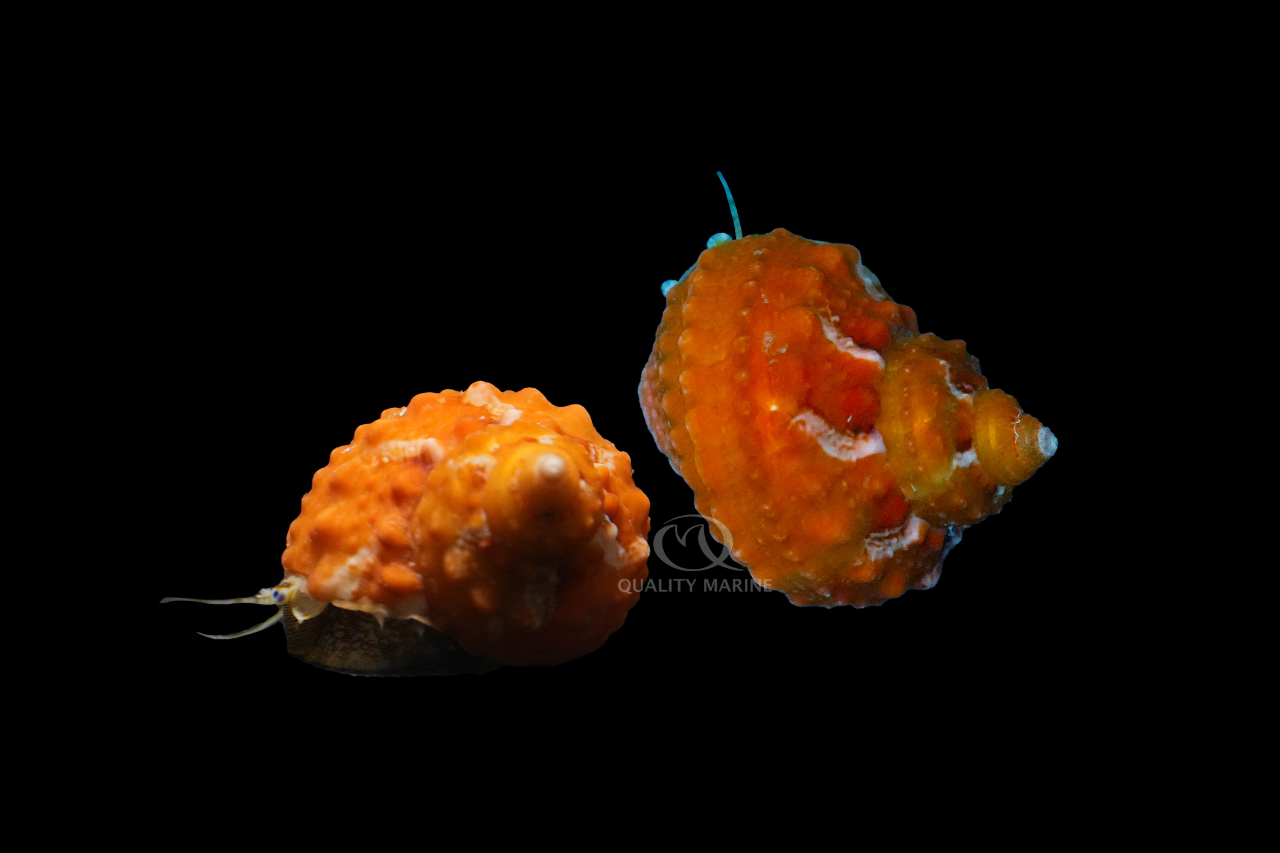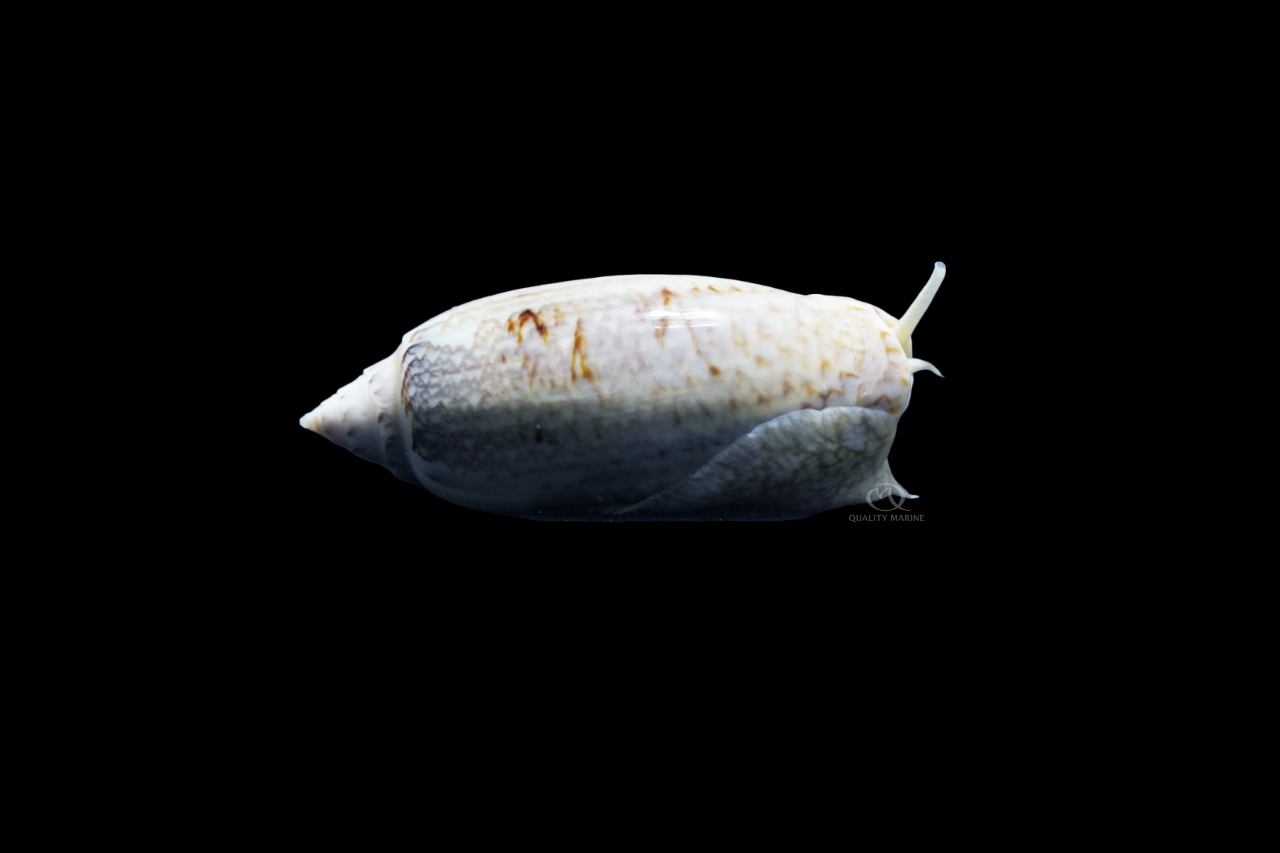The Scoop on Snails

When it comes to choosing your cleanup crew, there are lots of options. A well-rounded group should include a variety of different inverts, and perhaps a job specific fish or two. When it actually comes down to choosing these critters, the internet can give you a lot of variable opinions on which inverts are good, which ones are bad, and even what jobs they do (or don't). A lot of this confusion happens when things get mis-labeled, either by what they are, or where they came from, and both these situations can lead to some misunderstanding. When you buy your invertebrates from Quality Marine partners, you get the most experienced group of biologists, collectors, buyers, salespeople and all-around aquarium geeks on the planet ensuring what you order is what you get.
Once you can be sure the tag on the tank is right, you'll still need some help with what to actually buy. In an effort to educate, here a breakdown of most snails you'll commonly see, and which ones are good for what.

The most commonly sold snail in the marine aquarium world is the Turbo Snail not to be confused with the also useful Turban Snail; you have no idea how many times we've seen new hobbyists not realize this. Turbo Snails are in the genus Turbo, and there are two species you'll commonly see in North America. These are the Chestnut (or Orange) Turbo (Turbo castanea) and the Turbo (Turbo fluctuosus), there are also a couple unidentified snails that enter the system as turbo, one is “Zebra” and the other is “Cat's Eye.” These are both in the Turbo genus and can be treated the same as the other turbo snails you're likely to see. These snails mostly eat film algae and detritus but will consume some macro algae as well. Of the two, Chestnuts stay smaller and are less likely to knock things over, both are useful, reef safe snails.
A snail you see less frequently is the Turban Snail (Tectus fenestratus). These are small snails, never getting much bigger than 1/2 inch tall. They are macroalgae grazers and will mow down some hair algae but are less useful in regard to detritus than some other snails. They are also reef safe.
For a long time, Turban Snails were also called Trochus Snails, which is understandable as they have a very similar appearance, though Trochus get larger. Trochus Snails are famous for their penchant for eating diatoms, though they will also consume hair algae, film algae and just about anything else you put in front of them (except stuff you don't want them to eat). These big eaters are reef safe and can right themselves when they fall off rockwork.

Cerith Snails are from the Cerithium genus and are among the best detritus consumers you can buy. Their small, narrow shells allow them to get into nooks and crannies that aren't accessible by other cleaners. They are not good at consuming hair algae, focusing instead on biofilms and detritus. They are reef safe, and if there is one knock on them, it's that they are easily killed by hermit crabs for their shells, which are pretty much perfectly hermit crab sized.

Margarite or Margarita snails are from the Tegula genus, and they are widespread being found in a huge variety of habitats and even temperatures. Some species of Tegula have been collected in Alaska! They are generalists and will eat some of everything in your home aquarium, being best at detritus and biofilms. They stay pretty small, are reef safe, and can turn themselves over as long as they land on rock or glass.

Nassarius snails live under the substrate. There are at least two kinds of them in the aquarium hobby. One comes mostly from the tropical Pacific (often called Super or Super Pacific), and is a bit larger on average, the other is from the Caribbean and is smaller. They have a periscope and can smell food; you'll see them rise up from under the substrate for meals. They are very cool, and they can help turn over a sand bed. They are detrivores (eat detritus) and meat eaters and would love it if you gave them a little chunk of silverside to eat occasionally. They are also reef safe. We only recommend these snails for aquariums with sand beds. They don't need a lot of sand, but they do need a half inch or so to hide and rest.
Another sandbed loving snail is the Olive Snail (Oliva sp) and these have a similar niche to Nassarius. They are larger than Nassarius snails (even the supers) and are very active as a result, you'll see the pathway they've left

under the sand. They live on detritus and biofilm in the sand and don't respond to meaty meals in the same way that the Nassarius do. They have some of the most gorgeous shells you'll see and are commonly collected for jewelry and curiosity shops. They don't need a deep sand bed, but they do need a half inch or so. They are reef safe.
There is a lot of Conch's out there too, some of which are reef safe and some of which aren't. We'll dive into these and Cowries another day. Snails are among the most useful critters you can put in an aquarium and some of them are pretty and interesting to boot. Be aware that most aquarium sized snails have relatively short lifespans and are favorite foods of certain fish. As a result, all aquariums will need more snails at some point, and this is a natural thing. There's no good rule for how many snails your tank needs, but for big snails like Turbos, start at 1 per ten gallons, and for small ones like Cerith Snails, think twice that. For sandbed snails, start with one per ten gallons, and if you need more, you can always buy more.
When adding snails, it's important to add them before you need them. Reacting to a big algae bloom by blasting dozens of trochus snails into the tank will fix the problem, but then your snails will starve, die and cause a much bigger problem. Start early, start slowly, add more cautiously, and always, always ask for Quality Marine Inverts.